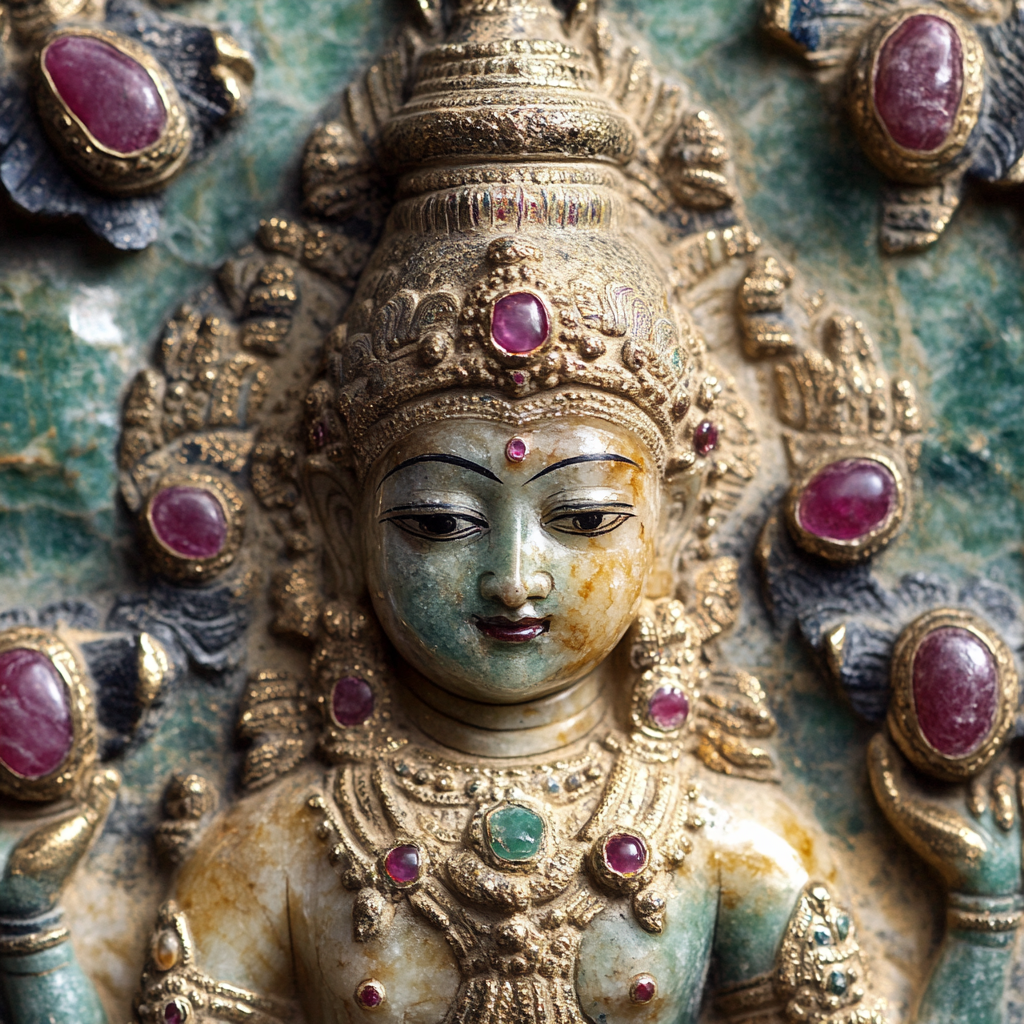The Enduring Power of Gemstones: A Legacy of Wealth, Status, and Influence
The Eternal Fascination with Gemstones
Throughout history, gemstones have been more than beautiful adornments; they have symbolised power, influence, and prestige across cultures. From the crowns of kings to the amulets of ancient warriors, gemstones have been markers of status wielded by those who shaped history. Even today, the world’s most valuable gemstones inspire awe, carrying a legacy stretching back thousands of years.
Regency Style Crown Set With Beautiful Coloured Gemstones and Diamonds
But why have these stones held such power? The answer lies in their rarity, mesmerising beauty, and the legends that surround them. Whether worn as a statement of dominance or believed to hold mystical properties, gemstones have always been more than just accessories—they have been symbols of authority, spirituality, and wealth.
The First Spark: How Ancient Civilisations Discovered Gemstones
Imagine a world untouched by modern mining or jewel-cutting techniques. The earliest humans, roaming vast landscapes, would have been struck by flashes of colour glinting in riverbeds and mountainsides. Unlike wood or bone, gemstones did not decay. They retained their brilliance, standing the test of time in a world where permanence was rare.
Some of the earliest recorded uses of gemstones date back to 100,000 years ago, when prehistoric societies crafted beads from amber and jet. By 40,000 BCE, early humans wore and traded primitive gemstones like quartz and garnet. These weren’t just trinkets—they were statements of status and value.
Hindu Goddess Set With Emeralds, Rubies And Jade
The discovery of red ochre in burial sites from 300,000 years ago suggests that early societies associated minerals with the afterlife. Over time, as humans learned to polish and shape these stones, they transformed from simple curiosities into potent symbols of wealth and influence.
How Gemstones Became the Currency of Prestige
Before the invention of gold coins, before written language, gemstones were already shaping the world’s earliest economies.
In Mesopotamia and Egypt around 3000 BCE, gemstones like lapis lazuli, sourced from Afghanistan, were traded across vast distances. Egyptian pharaohs adorned themselves with lapis amulets, while Sumerian rulers used gemstones in royal seals, marking their influence.
By 200 BCE, gemstones were moving along vast trade networks from Persia to Rome and China to India. Roman aristocrats flaunted Sri Lankan rubies, while Chinese emperors coveted Persian turquoise. The demand for these stones drove exploration, inspired technological advancements in mining, and led to the rise of powerful merchant dynasties controlling gemstone wealth.
The Royal Obsession: Why Kings and Queens Coveted Gemstones
For centuries, rulers understood the power of gemstones. They didn’t just collect them—they hoarded them, flaunted them, and weaponised them as instruments of control.
- Cleopatra was obsessed with emeralds, claiming an exclusive mine to ensure no one else could possess them.
- Julius Caesar amassed a legendary gemstone collection, convinced of their protective powers.
- Mughal emperors in India embedded gemstones into their crowns, swords, and thrones—none more spectacular than the Peacock Throne.
- Chinese emperors placed jade above all other gemstones, considering it a symbol of wisdom and justice.
Ancient Egyptian-style mask with Lapis Lazuli and gold inlays.
Even in medieval Europe, gemstones dictated royal power. The Black Prince’s Ruby, a spinel, has sat in the British Imperial State Crown for over 600 years, passed through the hands of kings and warriors.
Symbolism and Superstition: The Hidden Messages Behind Royal Gemstones
Every gemstone tells a story. Rulers didn’t choose them at random—they selected stones for their symbolic power.
- Rubies – Strength and protection; Burmese soldiers even embedded them into their skin for battle.
- Emeralds – Wisdom and foresight; Cleopatra and Spanish royalty prized Colombian emeralds.
- Sapphires – Loyalty and truth; Princess Diana’s sapphire ring continues this tradition.
- Diamonds – Invincibility and eternal rule; reserved for the most powerful monarchs.
- Pearls – Purity and wisdom; Queen Elizabeth I wore them to reinforce her image as the “Virgin Queen”.
Gemstones as Tools of Diplomacy and War
History is filled with stories of wars fought over gemstones, treaties sealed with jewels, and kingdoms built upon their trade.
The Hope Diamond, once part of the French Crown Jewels, symbolised the monarchy’s divine right to rule. Similarly, Queen Victoria received the Timur Ruby as a diplomatic gift, reinforcing Britain’s dominance over India.
The Modern Legacy: How Gemstones Continue to Shape Luxury and Status
While monarchs no longer rule through gemstones, their influence remains deeply ingrained in the world of luxury jewellery.
A bespoke gemstone ring or necklace isn’t just an accessory—it’s a connection to centuries of craftsmanship, power, and legacy.
Ready to Own a Piece of History?
Gemstones have been the silent witnesses to history’s greatest moments. They have shaped empires, sealed alliances, and symbolised unbreakable power. Today, they continue to captivate those who understand their deeper significance.
Create Your Own Legacy
If you’re drawn to the enduring allure of gemstones, explore our bespoke jewellery collection at Christopher Stoner Bespoke.
Dive Deeper into Gemstone History
Want to uncover the hidden legends and influence of gemstones? My book, The Gemstone Compass, takes you on a journey through the world’s most powerful stones. Get your copy on Amazon today.
Book a Consultation
Looking for a bespoke jewellery piece designed just for you? Book a consultation with me here.
About Me
For over 30 years, I have reimagined heirloom jewellery, transforming cherished pieces into bespoke designs that retain their sentiment while reflecting modern elegance. Every redesign honours the story behind the jewellery, ensuring it remains wearable, timeless, and deeply personal. My passion for fine jewellery extends beyond craftsmanship—I have also authored The Gemstone Compass, Propose with Confidence, and Beyond the Sparkle, exploring the artistry, history, and future of exceptional jewellery.



